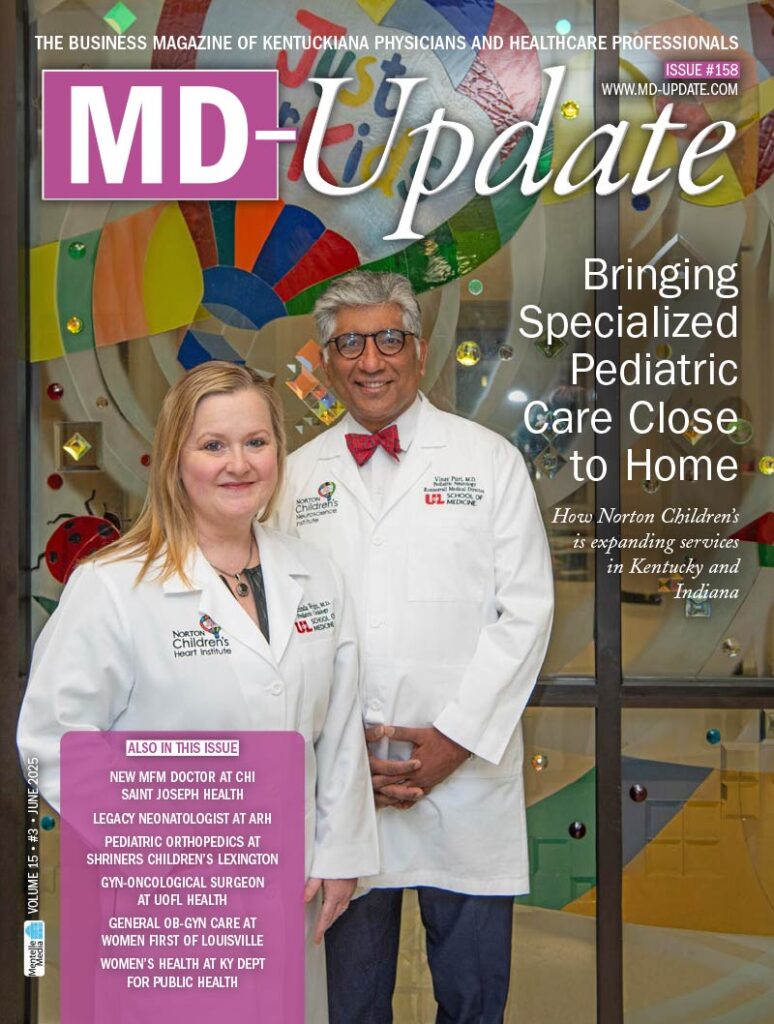SEND YOUR NEWS ITEMS TO MD-UPDATE > news@md-update.com
LEXINGTON “Medical Marijuana Fact and Fiction” was the theme of the Howard J. Bost Memorial Health Policy Forum, presented by the Foundation for a Healthy Kentucky on Monday September 23, 2019 at the Marriott Griffin Gate in Lexington.
The goal of the forum was to “Elevate the public health voice in medical cannabis policymaking discussions in Kentucky.” According to its website, the Foundation for a Healthy Kentucky, led by president and CEO Ben Chandler, “is a nonprofit, non-partisan organization that opened in 2001 with a mission to address the unmet health needs of Kentuckians by influencing policy, improving access to care, reducing health risks and promoting health equity.”
Speakers and presentations at the conference included Shannan Babalonis, PhD, from the Center on Drug and Alcohol Research at the University of Kentucky; Brian Higgins, Esq, with Frost Brown Todd, LLC; Andrew Freedman, co-founder, Freedman & Koski, Lisa Gill of Consumer Reports, and Danesh Mazloomdoost, MD, Wellward Regenerative Medicine in Lexington and a fellowship-trained anesthesiologist in pain medicine.
More Research Needed

Babalonis referenced a Pain and Opioids In Treatment (POINT) study conducted in Australia, reviewed in Lancet, 2018 that suggested that “medical cannabis use may be detrimental to pain patients taking opioid analgesics. Cannabis worsened patient outcomes with greater pain severity and interference in their daily activities.”
Her conclusion was that “not enough high-quality studies have been conducted to determine what conditions it may help, and what conditions may worsen with cannabinoid treatment.”
Legal Questions

Brian Higgins, an attorney from the Cincinnati office of FBT, has advised health-care systems, senior living facilities, and physicians on medical marijuana use, mostly in Ohio. He presented some background facts such as:
Before the 1900s, it was legal to grow and consume marijuana
In 1906, the Pure Food and Drug Act said marijuana products had to be labeled with contents and dosage.
In the early 1900s, states began to criminalize marijuana and its use, associating it with migrant immigrant workers.
In 1986, the Anti-Drug Abuse Act created mandatory minimum penalties for marijuana offenses.
In 1996–1998 California, Alaska, Oregon and Washington legalized medical marijuana.
In 2012, Colorado and Washington legalized recreational marijuana.
Medical marijuana is currently legal in 33 states plus Washington, DC, and in 11 states plus DC, recreational use is legal. States laws vary, but generally medical marijuana laws require a certified physician visit and certain medical conditions; some home-grown marijuana is permitted, but possession has limited amounts and time periods for use. Some states allow minors to use.
The sticking point, said Higgins, is the discrepancy between the Federal Controlled Substances Act which designates marijuana as a Schedule 1 controlled substance and the various states’ law. Enforcement of the federal laws is limited, but that could change, said Higgins.
Colorado Experience

Andrew Freedman of the consulting firm Freedman and Koski, Inc., spoke about some of the practical results that Colorado has experienced since recreational marijuana was legalized. Key points that most people care about are frequency of youth and adult use, hospitalizations, driving while high on THC, and tax revenue.
Ongoing and unresolved implementation issues around recreational marijuana include delivery systems, potency, vaping, and health and economic equity, said Freedman. Big corporations, both tobacco and vaping producers such as Altria, and pharmaceuticals such as Novartis, are getting into marijuana, he said.
In Freedman’s view, what is needed is more research and FDA approval, price controls, advertising restrictions similar to tobacco, and quality control. Citing the Pareto principle, he said that 80% of the use will come from 20% of the users, but the debate in the public space is very spirited.
Marijuana: Medicine or Intoxicant?

Mazloomdoost said that, in his opinion, calling marijuana medicine is disingenuous and misleading. He explained that medicine is a drug that is unsafe until it is proven safe; a supplement is safe until proven unsafe; and some substances are intoxicants that are unsafe but recreational and fall into the self-medicating category, which he believes fits marijuana.
“Nicotine has some medicinal benefits for certain conditions, but no doctor would prescribe it today,” said Mazloomdoost.
More double-blind, placebo, clinical trials, more data, better control of quality and dosage, and understanding the risks and benefits are needed before Mazloomdoost said he’ll call marijuana “medicine.”
CBD OIL
Nowhere is the adage “Let the buyer beware” more applicable than in the current rage of CBD supplements. Gill stated the five most common consumer issues from her findings: widespread use of CBD for a variety of reasons; consumers assume CBD is safe; product labels can misstate THC and CBD levels; there are limited state regulations; and federal regulations are confusing.
Consumers are using CBD for stress, or anxiety, for joint pain, for better sleep, and for recreation. The majority, 63%, said CBD was “very or extremely” effective.





